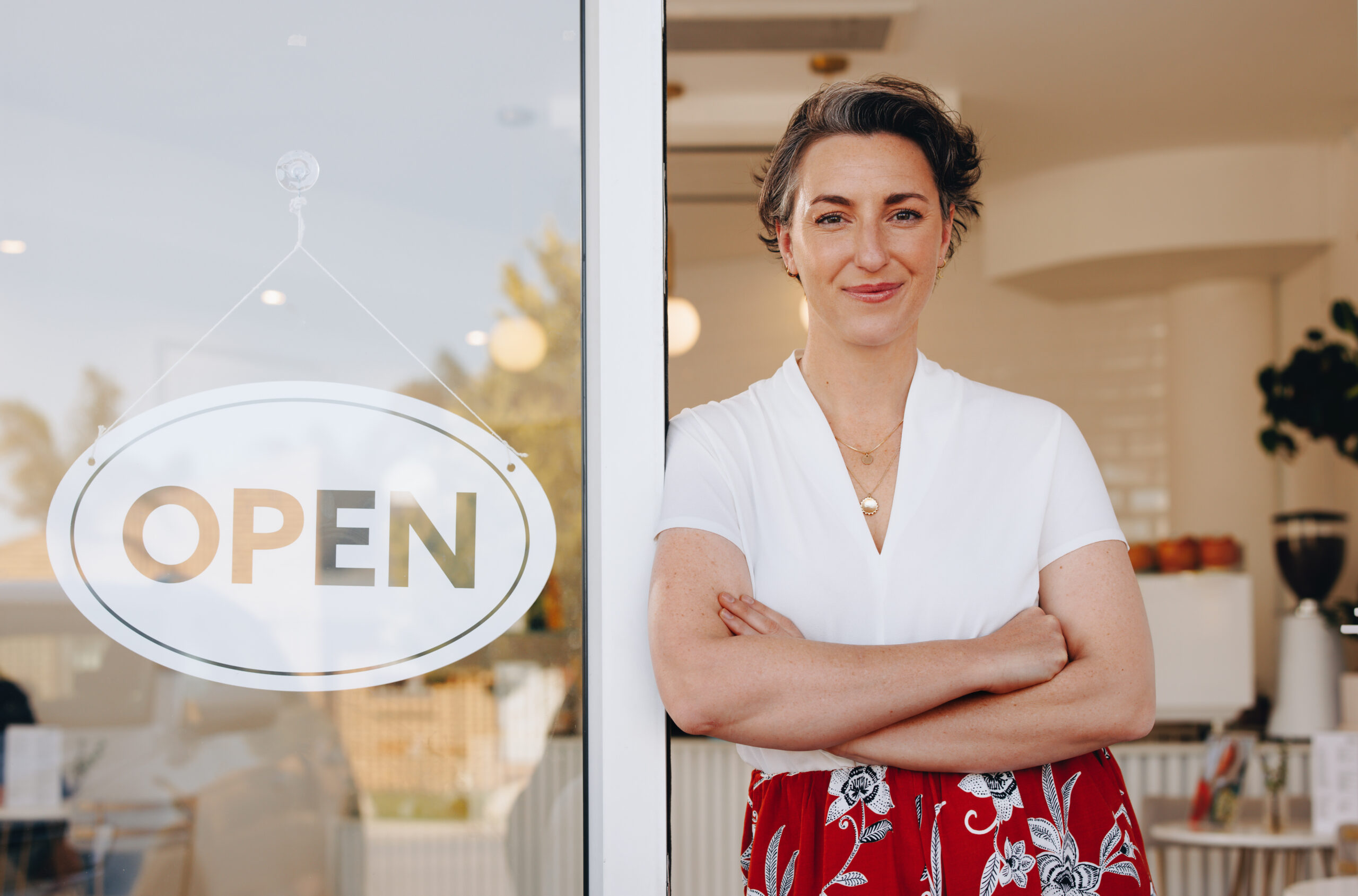Woman-owned independent businesses may be small — although this isn’t always the case — but that doesn’t mean they aren’t mighty. In fact, according to a 2024 study commissioned by Wells Fargo, woman-owned businesses comprise roughly 39% of U.S. companies, employ over 12 million workers, and generate revenues of $2.7 trillion, making them a force to be reckoned with. Still, success isn’t assured, which is why knowing how to market your woman-owned business and devising a strategy focused on its unique characteristics is essential.
What’s So Special About Woman-Owned?
What are some of the qualities inherent to woman-owned businesses that a marketing plan should highlight?
Jensen Savage, CEO & founder of Savage Growth Partners, a Chicago-based marketing agency serving the home improvement, IT, healthcare, and professional services markets, says woman-owned businesses typically excel at relationship- and community-building. This provides an opportunity to distinguish themselves from competitors by touting their service and customer experience — advantageous where differentiating by product features wouldn’t be as compelling.
As such, Savage says a woman-owned business marketing plan should:
- Toot their horn — loudly. “They shouldn’t be watered down to look softer,” she says. “[The plans] should double down on positioning and expertise, while weaving in the authentic narrative of being woman owned.”
- Find the “sweet spot.” Don’t avoid marketing the business as woman-owned, but also don’t rely on this at the expense of demonstrating your expertise and authority. Instead, focus on your company’s results, achievements, and offerings, with the woman-owned aspect playing a supporting, yet important, role.
- Refrain from “copycat” marketing. Rather than appropriating marketing strategy templates from other companies, showcase your own voice and value proposition. Taking this approach will help you stand out from the crowd, keeping you from coming across as just another option among many.
Woman-owned business marketing plans should also reflect the company’s “distinctive perspectives,” says Holly Mitton, founder of Little Bird Boston, a boutique PR and marketing agency that works with small businesses, startups, and nonprofits. Such perspectives oftentimes reflect their ideals or are inspired by firsthand experiences at successful problem-solving.
“These qualities are worth highlighting because they resonate deeply with fellow women or their target audience,” Mitton says. “And today’s consumer is much more likely to choose brands and services that feel authentic and genuine.”
How to Market Your Woman-Owned Business: Getting Started
To begin your marketing efforts, reflect on your journey and how you got to where you are. Identify your passions, your one-of-a-kind qualities, and the principles shaping your brand, suggests Mitton. Then:
- Tell your story. “Unlike larger or more traditional businesses, woman-owned companies often have a highly personal story behind the business that can create an emotional connection with their customer,” says Mitton.
- Calculate your positioning. Think about your “unfair advantage,” suggests Savage. Are you a woman-owned business in a male-dominated industry? Are you able to provide a sympathetic, compassionate customer experience? “Lead with that, then align the channels and tactics accordingly.”
- Consider outside expertise. Developing a plan for how to market your woman-owned business may seem daunting. Additionally, it’s easy to head off in the wrong direction, costing time, money, and even customers. That’s why hiring a marketing strategist to devise a plan from the beginning (or evaluate the one you have) can prove worthwhile.
What to expect from an expert? Among other things, Mitton says they should deliver an assessment that:
- Provides insight as to how your customers view you.
- Helps you zero in on your core messaging and if it’s resonating with your primary targets.
- Evaluates your social media engagement and analytics, making recommendations as to what platforms might have the biggest impact.
As for social media, remember it’s essential that your content aligns with your brand, promoting and enhancing it, not inadvertently undermining your image or objectives.
Evaluating Marketing Strategies, Addressing Weaknesses
Operating as a woman-owned business in the male-dominated home improvement industry may seem a tough obstacle to overcome, but the female contractor Savage worked with turned this into her greatest asset.
How so?
“Her strategy was simple but effective,” says Savage. “She repositioned woman-owned from a demographic label into a quality promise.”
Tactics she deployed included:
- Studying the marketplace. The contractor paid attention to complaints people had about her competitors, noting recurring themes.
- Calling them out. Her marketing plan addressed these complaints “head-on,” says Savage.
- Highlighting her values. The contractor capitalized on three key qualities — attention to detail, communication, and respect — knowing these would resonate with potential clients’ pain points.
- Making her differences clear. This contractor emphasized she’d catch what others missed, would provide regular updates, and would keep jobs running smoothly and on time.
Within 18 months of implementing this reenergized plan, the contractor was booking jobs months ahead of time and was charging 20% to 30% above the going rates, says Savage. She also attracted clients who specifically requested her rather than price-shopping.
How to evaluate your woman-owned business marketing plan? Savage suggests asking the following questions:
- Is the strategy making you money? Is it bringing in revenue? Track every marketing campaign against ROI.
- Does it effectively highlight what makes your business special? Or is it so generic that anyone could copy it? If the latter is the case, tighten and refine your message so it clearly communicates what you are all about and can offer, says Savage.
- Will the plan grow along with the business? Is it scalable and sustainable?
“A strong marketing strategy should always include a clear value proposition, a reliable lead-generation engine, and a conversation process that doesn’t depend solely on the owner’s hustle,” says Savage. “When those pieces are in place, growth becomes much more predictable and sustainable.”
Resources for Woman-Owned Businesses
There are plenty of resources available to woman-owned businesses. Some of these include:
- WBENC (Women’s Business Enterprise National Council): According to Savage, this organization is the largest certifier of woman-owned businesses and offers benefits like networking opportunities, mentoring, and other tools/resources.
- Amber Grants: This organization offers tailored capital support to women entrepreneurs, bestowing at least $30,000 monthly to woman-owned businesses.
- NAWBO (National Association of Women Business Owners): Has national and local chapters offering networking events, educational programs, and advocacy for woman-owned businesses.
- AWBC (Association of Women’s Business Centers): A network of business centers providing training, mentorship, and development support.
A quick internet search reveals many more organizations and associations specifically dedicated to woman-owned businesses. Additionally, platforms like Facebook, LinkedIn, and Meetup offer ways to connect.
When it comes to networking, Mitton advises not making it all about your business. Instead, focus on creating authentic, mutually beneficial and long-term relationships.
“Over time, those genuine connections will be meaningful, and you’ll build a trusted network to support your business goals,” she says.
PAMELA MILLS-SENN is a freelance business and trade writer based in Seal Beach, California.






